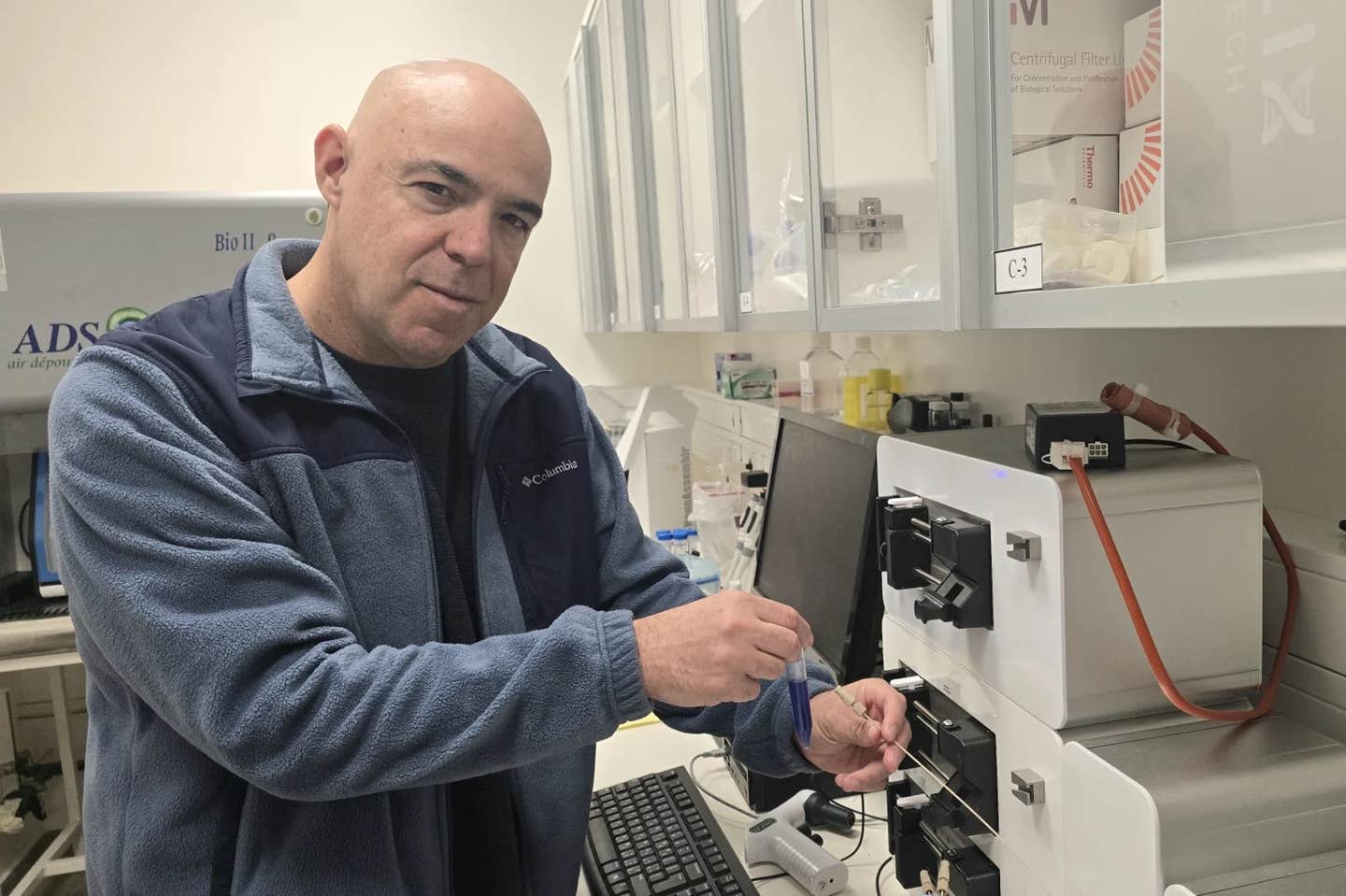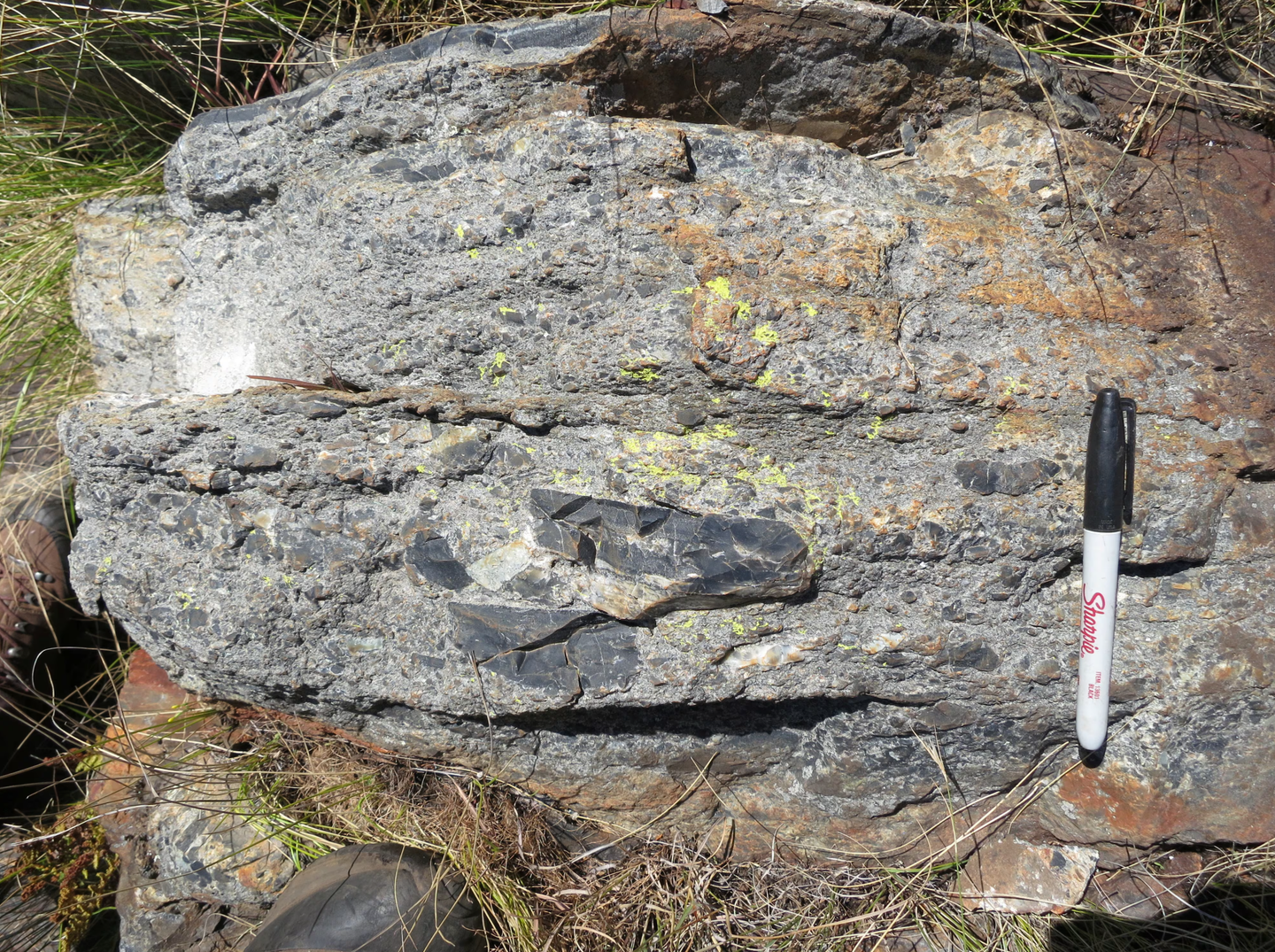Simple blood sugar test can predict Alzheimer’s disease 10 years in advance
A type of sugar molecule in blood is associated with the level of tau, a protein that plays a critical role in the development of dementia

[Apr. 13, 2023: JD Shavit, The Brighter Side of News]
The prototype fuel cell is wrapped in a fleece and is slightly larger than a thumbnail. (CREDIT: Fussenegger Lab / ETH Zurich)
Alzheimer’s disease is a degenerative disorder that affects the brain and its ability to function properly. The disease is caused by the accumulation of proteins, such as amyloid beta and tau, that cause the death of neurons in the brain.
Early diagnosis and treatment of Alzheimer’s disease is crucial, as clinical trials have shown that treatment should commence early in the pathological process, before too many neurons have died, to reverse the process before it is too late. However, reliable and cost-effective screening methods for early diagnosis of Alzheimer’s disease are currently lacking.
Researchers at Karolinska Institutet in Sweden have made a significant breakthrough in Alzheimer’s disease research. They have discovered that a type of sugar molecule in blood is associated with the level of tau, a protein that plays a critical role in the development of severe dementia.
The study, which is published in Alzheimer's & Dementia, can pave the way for a simple screening procedure that is able to predict the onset of Alzheimer’s disease ten years in advance.
Related Stories:
“The role of glycans, structures made up of sugar molecules, is a relatively unexplored field in dementia research,” says the study’s first author Robin Zhou, a medical student and affiliated researcher at the Department of Neurobiology, Care Sciences, and Society (NVS), Karolinska Institutet.
“We demonstrate in our study that blood levels of glycans are altered early during the development of the disease. This could mean that we’ll be able to predict the risk of Alzheimer’s disease with only a blood test and a memory test.”
The study was conducted by researchers in Lars Tjernberg’s research group at the Division of Neurogeriatrics at Karolinska Institutet in collaboration with the Aging Research Centre at Karolinska Institutet, the Stockholm Gerontology Research Center, and Karolinska University Hospital.
Serum bisecting N-acetylglucosamine (GlcNAc), total tau, and progression to AD. Correlation between bisecting GlcNAc and total tau in serum is shown for (A) the whole sample; (B) participants who did not develop AD over the course of this study. (CREDIT: Alzheimer's & Dementia)
The results are based on 233 participants of the Swedish National Study on Aging and Care in Kungsholmen (SNAC-K). The samples were collected between 2001 and 2004, and the participants were monitored regularly with respect to factors such as memory loss and the presence of dementia. The follow-ups were carried out every three to six years and continued for 17 years.
Glycans are sugar molecules found on the surface of proteins, the building blocks of life, and determine the location and function of these proteins in the body. By measuring blood glycan levels, the researchers found that individuals with matching levels of glycans and tau were over twice as likely to develop Alzheimer’s-type dementia.
The researchers also showed that a simple statistical model that takes into account blood glycan and tau levels, the risk gene APOE4, and a memory test can be used to predict Alzheimer’s disease to a reliability of 80 percent almost a decade before symptoms such as memory loss appear.
Progression to AD stratified by tau/bisecting GlcNAc ratio. (F) Progression to AD stratified by high or low tau/bisecting GlcNAc ratio. (CREDIT: Alzheimer's & Dementia)
“There is both a practical and a financial need for non-invasive screening methods for Alzheimer’s. Markers in blood are preferable, as taking samples of the cerebrospinal fluid is more difficult and brain imaging is expensive,” says corresponding author Sophia Schedin Weiss, docent at NVS, Karolinska Institutet.
The researchers will now be analyzing blood samples from the remaining participants of the SNAC-K study, as well as from participants of other aging studies in and outside Sweden. They are collaborating with researchers in primary care in Sweden to evaluate different biomarkers for dementia at primary health care centers.
“We hope that glycans in the blood will prove to be a valuable complement to current methods of screening people for Alzheimer’s disease that will enable the disease to be detected early,” says Dr. Schedin Weiss.
Synergy of tau/bisecting N-acetylglucosamine (GlcNAc) ratio and other variables in predicting AD. (CREDIT: Alzheimer's & Dementia)
The study was conducted by researchers in Lars Tjernberg’s research group at the Division of Neurogeriatrics at Karolinska Institutet in collaboration with the Aging Research Centre at Karolinska Institutet, the Stockholm Gerontology Research Center, and Karolinska University Hospital.
It was financed by the Swedish Research Council, the Swedish Research Council for Health, Working Life and Welfare, Stiftelsen Gamla Tjänarinnor, the Gun and Bertil Stohnes Foundation, the Swedish Alzheimer’s Foundation, Stiftelsen Dementia, JPND, Vinnova and Region Stockholm (ALF). The researchers report no conflicts of interest.
Note: Materials provided above by The Brighter Side of News. Content may be edited for style and length.
Like these kind of feel good stories? Get the Brighter Side of News' newsletter.
Joseph Shavit
Head Science News Writer | Communicating Innovation & Discovery
Based in Los Angeles, Joseph Shavit is an accomplished science journalist, head science news writer and co-founder at The Brighter Side of News, where he translates cutting-edge discoveries into compelling stories for a broad audience. With a strong background spanning science, business, product management, media leadership, and entrepreneurship, Joseph brings a unique perspective to science communication. His expertise allows him to uncover the intersection of technological advancements and market potential, shedding light on how groundbreaking research evolves into transformative products and industries.



